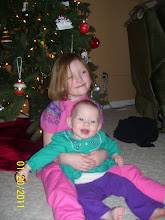This week we were asked to evaluate ourselves and have two
others from different area in our life to evaluate us as communicators, I chose
my daughter and a co-worker whom I have worked with for 14 years; we have
teamed as teachers and mentors. I have to admit this made me a little nervous
and curious at the same time. Nervous
because I am my worst critic and sometime very hard on myself, I often use self
–denigration attacking myself and all my shortcomings (O’Hair, Wiemann, 2009),
thus feeling very inadequate. Curious because I wanted to know how others view
my communication abilities, I was surprised at some of the results.
As I mentioned I am my worst critic and when completing the
Communication Anxiety Inventory I rated myself as mild because I am at times uneasy
in some situations and confident in others, this often is due to the people
within the group that I am with, if I feel intimidated by the group or
comfortable with them depends on how I respond and interact. My daughter and co-worker scored me as low,
comfortable and confident in most situations.
This surprised me because I thought they would be able to notice my lack
of confidence through my nonverbal cues.
My dad used to tell me I wear my emotions on my sleeve, and so I assumed
everyone could see how I was feeling inside.
Granted my daughter only sees me with family and friends, but my
co-worker and I have been in several workshops together, and have put on
trainings for other professional in the early childhood field and presented to
the directors of early childhood programs.
If anyone knew my weaknesses she would.
So to have her say I appear comfortable and confident was quite a
compliment, and gave me encouragement that what I feel inside is not always displayed
on the outside.
The Verbal Aggressive Scale was another assessment of how I
relate as a communicator. All three of
us scored me as moderate what surprised me was how close our scores were, my
daughter scored me 61, my co- worker 64 and I scored myself as 63. I know I am not aggressive and often times I
would consider myself as none on the scale because I do hate confrontation and
often try to find solutions that would avoid attacking or making others feel
bad, but through the past two years as a mentor I have learned skills that have
helped me work through situations that may be uncomfortable and to have conversations
that are sometimes hard especially when you need to confront someone about
their behavior or best practices.
This leads me to the
last assessment, Listening Styles Profile I am definitely a people – oriented
person wanting to build relationships through empathy. This appears to be a great attribute and I
believe it is, but it can also get in the way of what needs to be discussed and
can often lead me to trust others and later find out they did not follow
through. My husband would agree with the
interference of judgment, he says I am too trusting of others and allow people
to walk all over me. This is an area
that I am continuously working on, because as a leader in our program, I work
with staff to help them move forward in their own professional development, and
sometimes that requires work plans that are not always empathetic to their
situation.
Finding the balance between, being a listener who is
empathetic, yet respectful and considerate of others without losing sight of
the objectives within the conversations. This balance scales looks like a woman
and it reminds me of me always trying to find the balance….. not sure if that’s
the Libra and/or the communication style within me either way it is who I am.
References
O'Hair, D., &
Wiemann, M. (2009). Real communication. New York: Bedford/St. Martin's.
Rubin, R.B., Palmgreen, Pl, &Sypher, H.E.
(Eds.) (2009). Communication anxiety inventory. Communication research measures: A sourcebook. New York: Routledge.
Retrieved from http://mym.cdn.laureate-media.com/2dett4d/Walden/EDUC/6165/04/mm/quiz/quiz_communication/index.html
Rubin, R.B., Palmgreen, Pl, &Sypher, H.E.
(Eds.) (2009). Verbal aggressiveness scale. Communication
research measures: A sourcebook. New York: Routledge. Retrieved from http://mym.cdn.laureate-media.com/2dett4d/Walden/EDUC/6165/04/mm/quiz/quiz_verbal/index.html
Rubin, R.B., Rubin, A.M., Graham, E.E., Perse,
E.M., & Seibold, D.R. (Eds) (2009). Listening styles profile -16. Communication research measures II: A
sourcebook. New York: Routledge. Retrieved from http://mym.cdn.laureate-media.com/2dett4d/Walden/EDUC/6165/04/mm/quiz/quiz_listening/index.html

